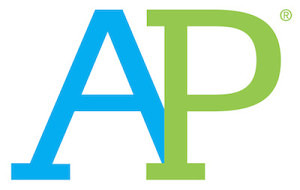How to Earn College Credits in High School
July 24, 2022

 Too many talented students pass up opportunities to earn college credits during their high school years for just a tiny fraction of what they will pay later in freshman tuition. Understanding the options that may be available to you at your high school is step one. Step two is exploring the policies of each of your prospective colleges with regard to awarding post-secondary credits earned prior to matriculation. What follows is a look at the most common ways to earn college credits in high school including:
Too many talented students pass up opportunities to earn college credits during their high school years for just a tiny fraction of what they will pay later in freshman tuition. Understanding the options that may be available to you at your high school is step one. Step two is exploring the policies of each of your prospective colleges with regard to awarding post-secondary credits earned prior to matriculation. What follows is a look at the most common ways to earn college credits in high school including:
- Advanced Placement (AP) tests
- International Baccalaureate (IB)
- College Level Examination Program (CLEP) exams
- Dual enrollment
- Summer or Winter study sessions
For each option, we will explore how they have the potential to save you tens of thousands of dollars at almost any college or university in the United States.
Advanced Placement (AP)
Advanced Placement tests cost $96 a pop and can earn you between three and eight college credits a piece. The math on this trade-off is nothing short of astonishing. In 2020-21, the average private college costs nearly $37,000 per year in tuition alone. That’s for 30 credits which translates to over $1,200 per credit. In this example, passing just one AP test can save you between $3,600-$10,000 thousand bucks. Even if Gordon Gekko was your financial advisor, you would be hard-pressed to get that kind of return on a $96 investment
Will College Accept AP Credit?
Only some of the most-selective colleges will not award college credit for a strong performance on the AP exam. In the Ivy realm, Dartmouth stopped granting AP credit a handful of years ago. Brown won’t award credit but will allow students with high AP scores to opt out of lower-level classes. On the other hand, Princeton still grants credit for AP tests in foreign language, math, science, and economics. Entering Princeton with AP credits can allow you to complete a degree in 3.5 or even 3 years. Even MIT will accept AP credits in some areas if a student scored a 5; Caltech, on the other hand, will not award any credit for AP tests.
Most schools accept AP credits with open arms, although the minimum level of performance varies. Boston University, like many selective institutions, only accepts scores of 4’s and 5’s on the AP exam. In some cases, at BU, a distinction is made between the two. In evaluating AP Biology scores, BU will award 8 credits for a 5 on the AP exam and 4 credits for those who scored a 4. At the University of Chicago, incoming students can substitute APs for credits. However, they need to score a 5 in most areas (with the exception of foreign language where a 3 will actually suffice). Alternately, the University of Wisconsin-Madison will actually grant three credits for each score of 3 on an AP exam in many areas.
In sum, whether you are eyeing a less-selective or super-prestigious college, it pays to take as many AP courses as you can handle without driving yourself nuts. Not only will the rigorous course load look good from an admissions standpoint, but the financial rewards can be immense.
International Baccalaureate (IB)
International Baccalaureate courses are very popular outside of the U.S. Yet, a growing number of American high schools also now offer students a chance to earn college credit through the IB program. Unlike with AP, IB tests require a student to have completed an IB course prior to sitting for the exam. However, not all schools in the U.S. will offer credit for singular IB test scores but rather require the completion of a comprehensive IB diploma.
The IB diploma takes teens two years to complete and require courses in six disciplines. While the AP curriculum allows students to play to their strengths, the IB diploma program takes a more holistic approach. This program forces students to master not only traditional subjects like experimental science and math but also learn a foreign language, write an essay, complete a community service project, and pass tests in every single content area. IB exams are scored on a 1-7 scale and, generally, a 4 is considered as passing (like a 3 on the AP).
It’s a common misconception that IB credits are not widely recognized by colleges and universities in the U.S. While this was a fairly accurate assessment a handful of years ago, today almost 1,700 American post-secondary schools award credit for IB. As with AP, individual school’s policies vary and need to be explored on a case-by-case basis.
The University of Florida will give you 3-4 credits for a score of a 4. They offer 6-8 credits for anything above a 5. The prestigious Barnard College offers varying degrees of credit for scores ranging from 5-7. Yet, they no longer allow IB to take the place of the school’s general education requirements. Caltech will not give credit for any IB coursework, however, they do not grant credit for AP either.
College Level Examination Program – CLEP Exams
CLEP exams are a lesser-known option for earning college credits. You can do so by paying a relatively small fee of $89 and demonstrating sufficient knowledge in one of 34 different areas. Administered by the College Board, the same company who runs AP and the SAT, CLEP exams are accepted by over 2,900 colleges and universities.
Since there is no accompanying course for CLEP exams, you are pretty much on your own in terms of preparation. Pick up a CLEP study guide for ten bucks. Get a sense of the material covered and take a sample test. If you feel like you have a firm grasp on the material, give it a try. The best time to do this is typically right after completing high school coursework that is relevant to the exam. Maybe you just finished an honors economics course and feel like you understand the material at a “college-level.” Your knowledge gained in the classroom plus your self-directed study should be a solid recipe for CLEP success.
Even though the vast majority of institutions will award credit for strong test scores, it is especially important to check the policies of individual schools related to CLEP. Many schools will only accept exams that they feel directly match up to a component of their own core curriculum. At Elon University, only 6 of the 34 CLEP exams can count toward undergraduate credit. The University of Arizona is more generous in this area, accepting 29 CLEP exams. Ithaca College actually grants credit for every single CLEP exam. Even better, they only require a score of 50 on most in order to land 3-6 college credits.
Dual Enrollment
Rather than a simulated college atmosphere, as with AP or IB, dual enrollment is an option that affords teens the chance to actually immerse themselves in a college environment while they are still in high school. Typically the participating post-secondary school will be a community college or local branch campus of a larger state university. Students typically utilize dual enrollment opportunities to either knock out core courses that will be requirements at their prospective colleges or to sample an academic offering that may be unavailable at their high school (i.e. a less commonly studied foreign language or computer science course).
Numerous studies have found that participation in dual enrollment aids college readiness and persistence. If that isn’t reason enough for you to consider this option, taking college courses during high school can, as with AP, IB, and CLEP, lop off a sizable portion of your freshman bill.
Finding out whether your future college will accept dual enrollment credits is relatively easy. A simple internet search will usually do the trick. There are a few schools that have more stringent policies. Rice University will consider previously-earned college credits but not if they appear on your high school transcript as dual credit. On the other hand, the University of Texas at Austin does accept credits earned in this manner. As a general rule, public schools are far more open to honoring dual-enrollment credits than private schools.
Summer/Winter Study
Our last option applies to college students on summer/winter break. Students returning home when class is not in sessions should consider taking a general requirement at a local community college. An additional option is to take a course online through any number of affordable institutions. The tuition cost, especially in the case of a community college, will be for pennies on the dollar, and students can set themselves up to graduate a semester or even an entire year early. Of course, you’ll want to check your future/current college’s policies. However, a good number of schools, particularly of the public variety, are willing to accept credits taken in this manner.
Most community colleges offer two five-week summer sessions and one four-week winter session. If you took advantage of these opportunities, you could conceivably knock out three extra courses per year, which equates to 9-10 credits. It’s easy to see how repeating this process could get a student at or near 30 credits. This is the equivalent of one full year of college!
How to Earn College Credit in High School – Final Thoughts
A great many students pursue a rigorous college-level course of study in high school purely from an admissions-driven mindset. We encourage you to expand your thinking. All teens should consider the enormous financial advantages that can be obtained as you simultaneously complete challenging coursework that will prepare you for a successful college experience.
Prospective college applicants will find hundreds of useful (and free!) data tables in our DATAVERSE.


